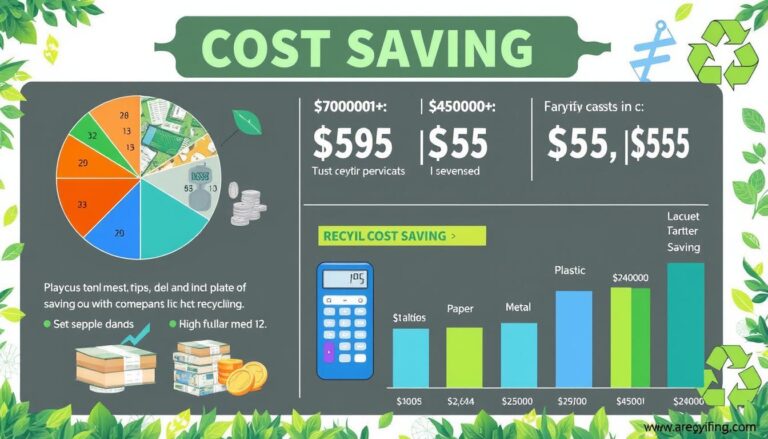5 Best Woods for Outdoor Furniture That Lasts
Choosing the right wood for outdoor furniture is key. Not all woods can handle the weather, keep looking good, and be comfy for a long time. This guide will show you the top five woods for outdoor furniture. They are weather-resistant, durable, and look great for years.
Key Takeaways
- Teak is the gold standard for outdoor furniture, offering unmatched weather resistance and natural durability.
- Acacia wood provides a versatile and affordable option, with natural properties that make it resistant to moisture and pests.
- Eucalyptus is a sustainable choice that combines strength, weather resistance, and a unique, modern appearance.
- Cedar is renowned for its natural insect resistance and ability to withstand harsh outdoor conditions.
- Understanding the specific requirements of your climate and environment is crucial when selecting the best wood for your outdoor furniture.
Related articles :
- Red Wooden Furniture Care: Tips for Long-Lasting Use
- DIY Wood Patio Covers: Stylish Plans for Outdoor Spaces
Understanding Outdoor Furniture Wood Requirements
Choosing the right wood for outdoor furniture is key. You need wood that can handle the weather and last long. It should stand up to sun, rain, and changing temperatures. Plus, it must be strong and last for many years.
Weather Resistance Factors
The best woods for outdoor furniture can handle moisture, UV rays, and temperature changes. Weather-resistant woods like teak, cedar, and redwood are top picks. They can take on the outdoors without losing their shape.
Durability Considerations
Durable wood types are vital for outdoor furniture. They must handle daily use, heavy loads, and impacts. Hardwoods like oak, maple, and ash are strong and last long, making them great for outdoors.
Maintenance Requirements
Keeping your outdoor furniture in good shape is important, no matter the wood. You’ll need to clean it, apply protective finishes, and fix any damage quickly. With the right care, your furniture will stay beautiful and useful for many years.
| Wood Type | Weather Resistance | Durability | Maintenance Needs |
|---|---|---|---|
| Teak | Excellent | Excellent | Low |
| Cedar | Excellent | Good | Moderate |
| Redwood | Excellent | Good | Moderate |
| Oak | Good | Excellent | Moderate |
| Maple | Good | Excellent | Moderate |
| Ash | Good | Excellent | Moderate |
Teak: The Gold Standard for Outdoor Furniture
Teak is the top choice for outdoor furniture. It’s known for being very durable and resistant to weather. This tropical hardwood is a favorite for high-quality patio and garden sets.
Teak is perfect for outdoors. Its dense grain and high oil content protect it from sun, rain, and humidity. This weather-resistant wood also fights off insects, rot, and decay. It’s a durable choice for your outdoor areas.
Teak also looks great. It has a elegant aesthetic that fits many outdoor designs. Its natural golden color and smooth finish add luxury to any space. As it ages, it gets a beautiful silvery-gray look.
“Teak is the undisputed champion when it comes to best woods for outdoor furniture that can withstand the rigors of Mother Nature.”
Teak furniture lasts a long time and is easy to care for. It’s a smart choice that adds value and beauty to your outdoor spaces. Whether it’s a modern rooftop or a cozy backyard, teak makes your best woods for outdoor furniture experience top-notch.
Acacia Wood: A Versatile and Affordable Option
Acacia wood is gaining popularity for outdoor furniture. It’s a mix of natural durability and affordability. This makes it perfect for creating furniture that lasts and looks great.
Natural Properties of Acacia
Acacia wood is known for its toughness against the weather. Its natural oils and tight grain protect it from sun, rain, and wind. Plus, it’s a sustainable choice because many acacia species grow fast and are easy to find.
Cost-Benefit Analysis
Acacia wood is more affordable than materials like teak or cedar. It’s not the cheapest, but it’s a great value. It adds a natural beauty to any outdoor area.
Maintenance Tips for Acacia
- Regularly clean acacia furniture with a mild soap and water solution to remove dirt and debris.
- Apply a weatherproofing sealant or oil every 1-2 years to maintain the wood’s natural luster and protection.
- Store acacia furniture indoors or under cover during the offseason to prolong its lifespan.
Knowing about acacia wood’s natural benefits, cost, and care helps you choose the right outdoor furniture. It’s a smart pick for creating lasting and beautiful outdoor spaces.
Eucalyptus: The Sustainable Choice
Outdoor furniture is now a big deal for those who care about the planet. Eucalyptus wood is a top pick because it’s tough, weather-proof, and good for the environment.
Eucalyptus grows fast in Australia, making it a great choice for wood. It can be cut down in just 10-15 years. This means we can keep using it without running out.
Eucalyptus wood is also amazing because it fights off decay, bugs, and weather. It’s perfect for weather-resistant woods in outdoor furniture. It stays strong even when it’s sunny, rainy, or near the sea.
| Property | Eucalyptus | Traditional Outdoor Woods |
|---|---|---|
| Durability | Highly durable, resistant to decay and insects | Susceptible to weathering and insect damage |
| Sustainability | Rapidly renewable resource | Often from slow-growing, endangered species |
| Maintenance | Requires minimal upkeep, can be left untreated | Needs regular oiling, sealing, or staining |
Choosing eucalyptus wood for your outdoor furniture is smart. It looks great and helps the planet. Its strength, weather resistance, and eco-friendliness make it a standout choice for your outdoor spaces.
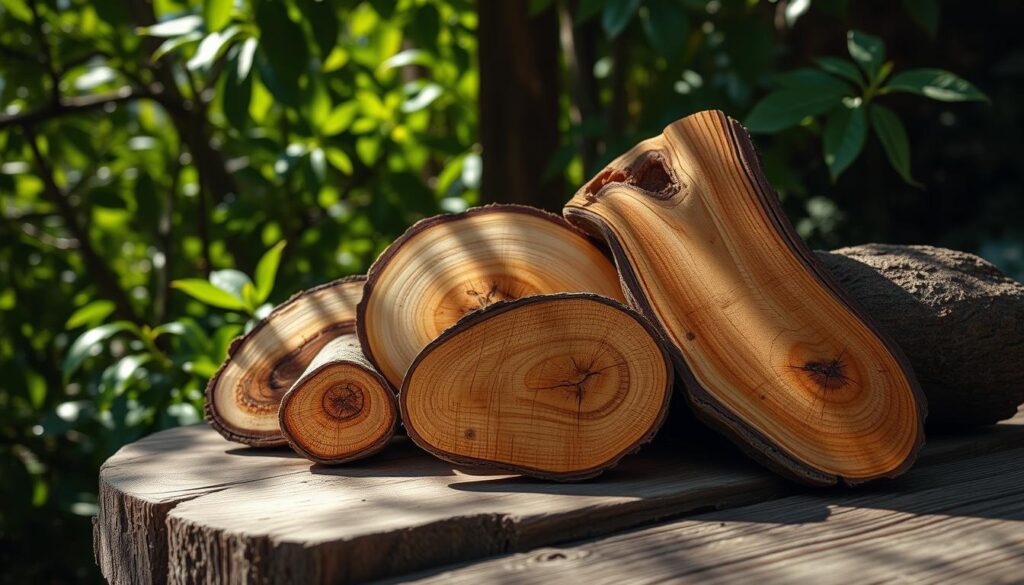
Cedar: Natural Beauty and Insect Resistance
Cedar is a top pick for best woods for outdoor furniture. It’s known for its natural beauty and being a durable wood type. This makes it perfect for outdoor living spaces.
Types of Cedar for Outdoor Use
Not all cedar is the same for outdoor furniture. The best types are:
- Western Red Cedar: It has a rich, reddish-brown color and fights off rot and insects.
- Eastern Red Cedar: It has a unique scent and keeps insects away.
- Incense Cedar: It’s stable and lasts long outdoors.
Cedar’s Natural Properties
Cedar wood is more than just pretty. It’s also full of natural benefits for outdoor furniture:
- Resistance to Decay and Insects: Cedar’s oils keep pests away and stop rot.
- Weather Resilience: Its tight grain and oils protect it from the weather.
- Thermal Insulation: Cedar keeps furniture cool, even in the sun.
“The natural beauty and exceptional durability of cedar make it a perennial favorite for best woods for outdoor furniture.”
Cedar is a top pick for outdoor furniture. It looks great, fights off pests, and lasts a long time.
Best Woods for Outdoor Furniture: Expert Recommendations
Experts in the industry share valuable insights on the best woods for outdoor furniture. They talk about weather resistance and durability. Their advice helps you choose furniture that lasts a long time.
Top furniture designers say teak and cedar are the best for outdoor furniture. Teak’s natural oils protect it from the weather. Cedar repels insects and looks great.
“For the ultimate in outdoor furniture that will last for years, I always recommend teak or cedar. These woods possess the ideal balance of weather resistance, durability, and low maintenance requirements.”
– Emily Walters, Outdoor Living Designer
If you’re looking for something more affordable, consider acacia and eucalyptus. Acacia is water-resistant and has a stunning grain. Eucalyptus is sustainable and weathers well.
- Teak: The gold standard for outdoor furniture, renowned for its weather-resistant properties and exceptional durability.
- Cedar: A classic choice, cedar’s natural oils provide protection against insects and the elements.
- Acacia: A versatile and affordable option with natural water-resistance and a beautiful grain pattern.
- Eucalyptus: A sustainable choice that offers excellent weather-resistant qualities.
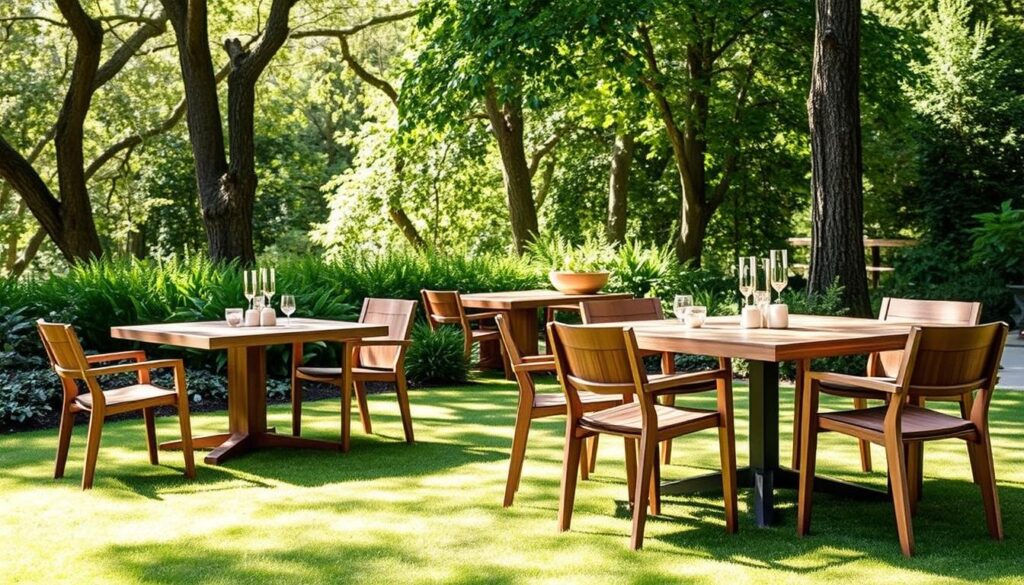
The right wood for your outdoor furniture depends on your climate, budget, and taste. Listening to industry experts helps you make a smart choice. This way, your outdoor furniture will look great for years.
Treating and Maintaining Outdoor Wood Furniture
Keeping your outdoor wood furniture in great shape takes effort. Using the right protective finishes and sticking to a seasonal care plan is key. This helps keep durable wood types and weather-resistant woods looking good and lasting longer outdoors.
Protective Finishes
Choosing a top-notch sealant or stain is essential for protecting your outdoor wood furniture. Look for products made for outdoor use. They can handle sun, rain, and temperature changes. Reapply every 12-18 months to keep your furniture safe.
Seasonal Care Guide
- Spring: Clean your furniture with mild soap and water, then dry it completely before applying a new protective finish.
- Summer: Check for wear or damage and fix it right away to stop it from getting worse.
- Fall: Clean your furniture gently and apply a light protective treatment to get it ready for winter.
- Winter: Store your furniture in a dry, safe place to protect it from harsh weather.
By following these easy steps, you can enjoy your durable wood types and weather-resistant woods for years. Your outdoor space will stay beautiful and welcoming.
Comparing Wood Prices and Long-term Value
Choosing the right outdoor furniture is more than just the price. The wood’s long-term value is also key. Let’s explore how acacia wood, eucalyptus wood, and others compare in cost and value.
Acacia wood is known for being affordable, costing between $20 and $40 per square foot. Its durability and weather resistance make it a good long-term choice. Eucalyptus wood, priced between $30 and $50 per square foot, offers great weather resistance and low upkeep, despite its higher initial cost.
| Wood Type | Price Range (per sq ft) | Estimated Lifespan | Maintenance Costs |
|---|---|---|---|
| Acacia | $20 – $40 | 15-20 years | Low |
| Eucalyptus | $30 – $50 | 20-25 years | Low |
| Teak | $50 – $100 | 30-40 years | Moderate |
| Cedar | $25 – $45 | 15-20 years | Low |
Don’t just look at the initial cost. Consider the wood’s durability, weather resistance, and upkeep needs. These factors greatly affect the true value of your outdoor furniture. By thinking about these, you can choose furniture that’s both affordable and durable, ensuring long-term enjoyment.
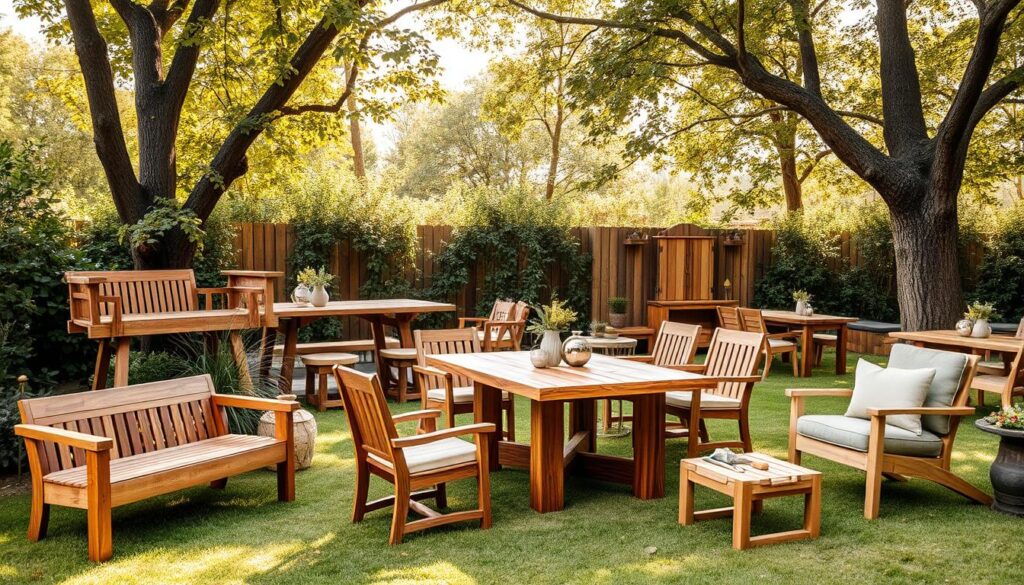
“The key to finding the best value in outdoor furniture is to look beyond the sticker price and consider the long-term cost of ownership. Durability and low maintenance requirements can make a higher-priced wood a smarter investment in the long run.”
Climate Considerations for Wood Selection
Choosing the right wood for outdoor furniture is important. It’s not just about looks but also about durability. Different climates have their own challenges, and knowing how wood species handle these is crucial.
Coastal Environment Challenges
Coastal areas are tough on outdoor furniture, with salt, humidity, and strong winds. Weather-resistant woods like teak, cedar, and eucalyptus are great choices. They resist rot, mildew, and insects well.
These durable wood types can stand up to coastal harshness. They keep their shape and strength over time.
Desert Climate Solutions
- In dry desert climates, wood furniture can crack and warp. Hardwoods like acacia and mesquite are good options. They handle extreme temperatures and low humidity better.
- Choosing wood rich in oil, like teak, also helps. It prevents drying and cracking, keeping furniture looking good for years.
| Climate | Best Wood Types | Key Considerations |
|---|---|---|
| Coastal | Teak, Cedar, Eucalyptus | Resistance to salt, humidity, and wind |
| Desert | Acacia, Mesquite, Teak | Resistance to cracking and warping due to temperature fluctuations and low humidity |
Understanding climate challenges helps you choose the right wood. Select weather-resistant woods and durable wood types for long-lasting outdoor furniture enjoyment.
Signs of Quality in Outdoor Wood Furniture
When looking for the best outdoor wood furniture, it’s key to spot quality. Knowing what makes wood furniture durable helps you choose wisely. This way, your furniture will last for many years, even in harsh weather.
First, check the wood’s grain. Tightly-grained, straight wood shows it’s dense and strong. Furniture with knots, cracks, or uneven grain is not as good. These flaws can weaken the wood over time.
Next, look at how the furniture is put together. Good outdoor furniture has mortise-and-tenon or dovetail joints. These are stronger than screws or nails. Also, the furniture should feel solid and well-made.
- Look for any damage like warping, splitting, or cracking.
- Make sure the hardware and fasteners are weather-resistant, like stainless steel.
- A smooth, even finish that’s sealed well is important to protect the wood.
By focusing on these points, you can find the best outdoor wood furniture. This investment will bring you joy for many years.
| Feature | Indication of Quality |
|---|---|
| Wood Grain | Tight, straight graining |
| Joinery | Mortise-and-tenon or dovetail joints |
| Frame Construction | Sturdy, well-balanced |
| Hardware | Weather-resistant materials (e.g., stainless steel) |
| Finish | Smooth, even, and properly sealed |
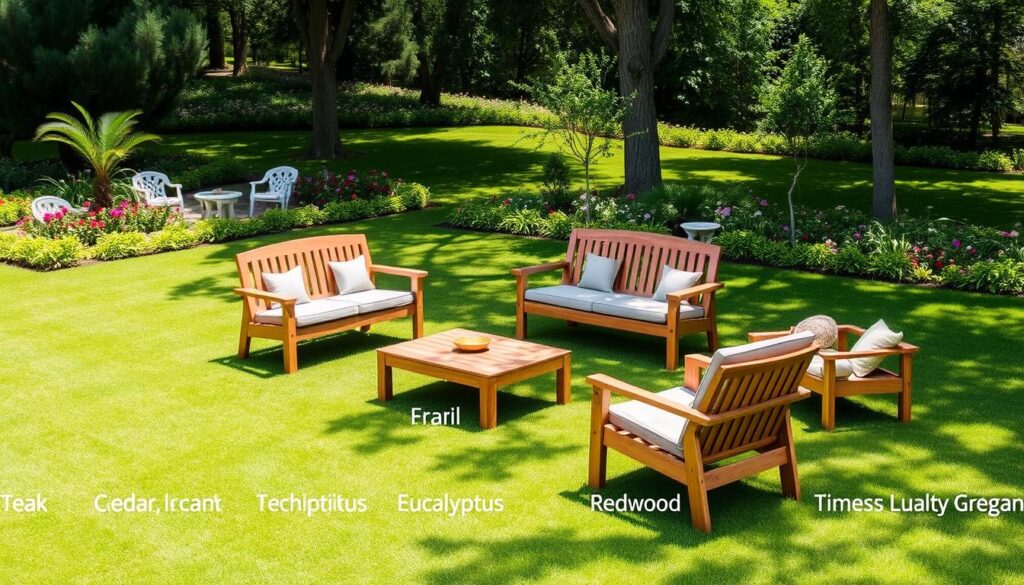
“Investing in high-quality outdoor wood furniture is a smart choice that can provide long-lasting beauty and durability for your outdoor living spaces.”
Common Mistakes to Avoid When Choosing Outdoor Wood
Choosing the right weather-resistant woods for outdoor furniture is key. It ensures your furniture lasts long and works well. But, many people make mistakes that can shorten your furniture’s life or make it less than perfect. Let’s look at the mistakes to steer clear of when picking the best woods for outdoor furniture.
One big mistake is ignoring the need for weather resistance. Not all woods can handle the outdoors well. Picking the wrong wood can cause it to warp, crack, or weather fast. This can make your furniture last much shorter than it should.
Another mistake is not thinking about the wood’s upkeep. Some woods, like teak or cedar, need regular oiling or sealing. Others might need less care. Not taking care of your wood can make it weak against the weather and shorten its life.
- Neglecting to research the specific properties and performance of different wood species
- Underestimating the impact of climate and environmental conditions on the chosen wood
- Failing to properly prepare, treat, and maintain the wood for outdoor use
- Prioritizing cost over quality, leading to the selection of inferior or unsuitable wood types
By knowing and avoiding these common mistakes, you can choose wisely. This will give you weather-resistant, durable outdoor furniture. It will also make your outdoor space more beautiful and useful.
Conclusion
Exploring the best woods for outdoor furniture shows us the importance of choosing the right wood. From Teak to Eucalyptus, each wood has its own strengths. The goal is to find a wood that looks great, lasts long, and is easy to care for.
We’ve looked at different wood types and what makes them special. This helps you pick the best wood for your outdoor furniture. Quality furniture not only makes your space look better but also lasts longer with less upkeep.
When picking outdoor furniture, think about your local weather, your style, and how long you want it to last. A smart choice means you can enjoy your furniture for many years. It helps make your indoor and outdoor spaces feel connected and welcoming.







